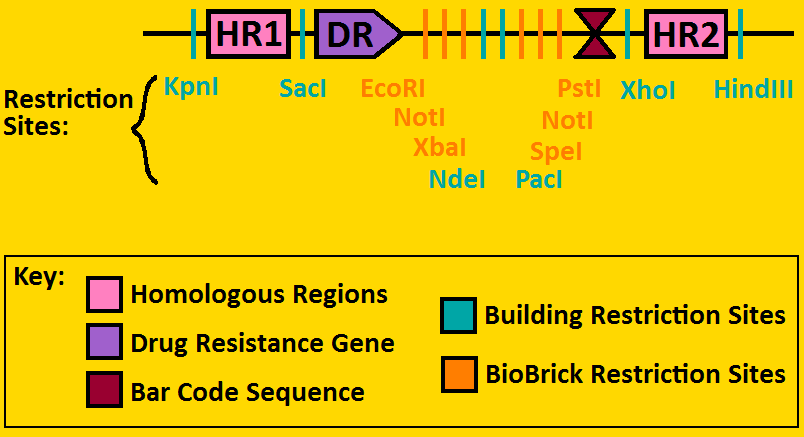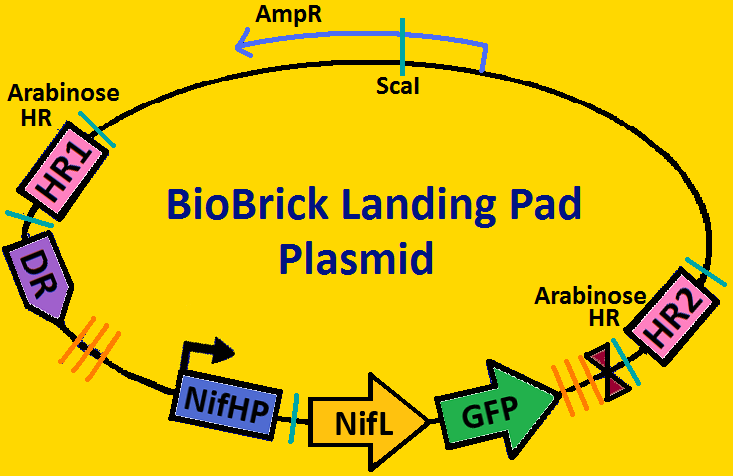Team:Michigan/Project/LandingPads
From 2008.igem.org
|
|---|
|
BioBrick Landing PadsWe will be using landing pads to insert our clock onto the chromosome of E. coli. Noisy behavior has proven detrimental to clock studies throughout the past, and we hope to reduce the noise in our system using landing pads.
BioBrick Landing Pad Polylinker
Landing Pads used for the Sequestilator
|
|---|
 "
"




